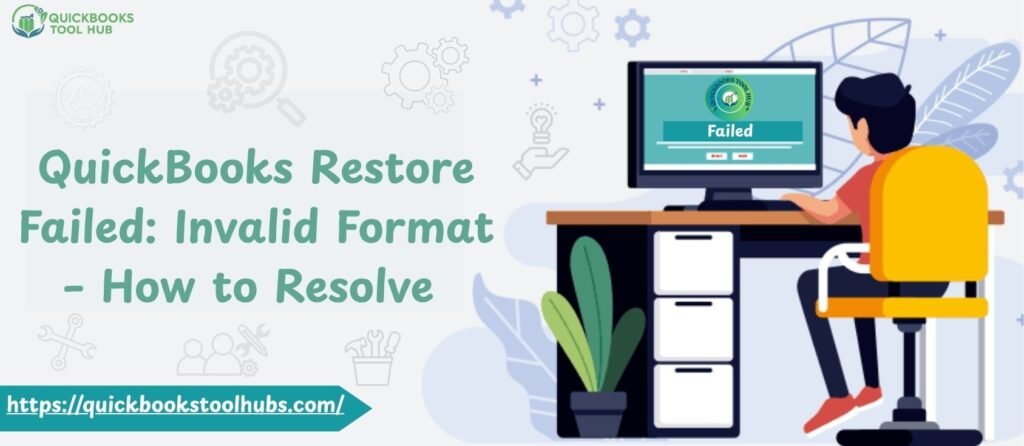The process of restoring a backup file in QuickBooks should be straightforward. Conversely, users may occasionally encounter an irritating error message that reads, “QuickBooks Restore Failed – Invalid Format.” ” This problem has the potential to impede your workflow and prevent you from accessing your financial data. The good news is that this error can be resolved by following the appropriate measures.
What is the meaning of “QuickBooks Restore Failed – Invalid Format”?
This error typically manifests when QuickBooks is unable to recognize or process the format of a company file (.QBB backup file). An error message such as “QuickBooks could not restore the file because the backup is not a valid format” may be displayed.
This occurs when the backup file is incompatible, damaged, or not generated correctly. This can also happen if you are attempting to restore a file from a newer version of QuickBooks to an older one or if the file extension is inaccurate.
Most Common Causes of the “Invalid Format” Error Corrupted Backup File – The. The QBB file may be insufficient or damaged during the backup or transfer process.
Incorrect File Extension – Utilizing a file that has been renamed or inaccurately formatted (e.g.,.QBB has been converted to.QBW).
Incompatible QuickBooks Version – Attempting to restore a backup that was generated in a more recent version using an outdated QuickBooks version.
Storage Issues with Third Parties – The file structure may be modified when backups are transferred via email or cloud services such as Google Drive.
Incomplete Download or Transfer – The file may be corrupted as a result of interruptions during the download or transfer process.
Fixing the “QuickBooks Restore Failed – Invalid Format” Error
1. Ensure that the appropriate file type is being used.
- Please ensure that only files with the. are restored. QBB extension (QuickBooks backup file). Avoid manually renaming it to.QBW or.QBM, as this may result in an invalid format error.
2. Revise QuickBooks Desktop
- Guarantee that you are employing the most recent version of QuickBooks:
- Open Help and select the “Update QuickBooks Desktop” option.
- Install any available updates.
- Restart QuickBooks and attempt to restore the file once more.
3. Access the backup file. Correctly
- Do not double-click the .QBB file. Instead, follow the proper restore process.
- Launch QuickBooks.
- Navigate through “File” to “Open or Restore Company,” then pick the option to restore from backup.
- Use the “Local Backup” setting to access the file saved on your computer.
4. Attempt to restore the same version.
- Ensure that the version of QuickBooks you are restoring to is equivalent to or newer than the version that was used to generate the backup. The backup cannot be restored in QuickBooks 2023 if it was created in 2024.
5. Verify the existence of file corruption.
- Before transmitting the file, request that the sender compress it into a.zip file if it was emailed or downloaded from a cloud service. Unzip the file and attempt to restore it once more.
- Preventing Future Errors
- Instead of manually transferring files, it is recommended that you utilize QuickBooks’ built-in backup feature.
- Restore your backup files to a test location on a regular basis to verify their functionality.
- Refrain from manually altering file extensions or renaming files.
- Backups should be stored in verified cloud services or secure local folders.
Conclusion
QuickBooks Restore Failed – Invalid Format errors can be a challenge, but they are typically straightforward to resolve once the root cause is identified. The correct restoration procedures can save time and stress, regardless of whether an outdated version, incorrect file extension, or corrupted file cause the issue.
If the error persists despite the implementation of all available solutions, it may be necessary to seek assistance from QuickBooks Support or employ a professional file repair service to retrieve your data.

